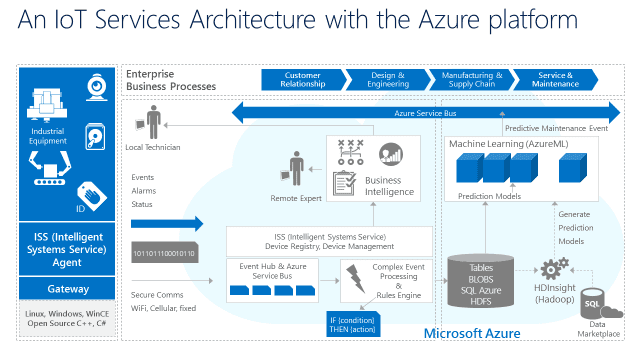Learning from the leaders: How manufacturers are using IoT to reimagine connected services and customer experiences
Learning from our manufacturing customers is one of the highlights of my work here at Microsoft. They are on the front lines, taking the latest insights, ideas, and technology and creating amazing solutions that drive customer value. Recently we shared two such customer stories on an interactive webcast where we discussed how the power of Microsoft Azure and the Internet of Things (IoT) are advancing manufacturing businesses. We heard from Delphi, a leading global supplier of electronics and technologies for automotive, commercial vehicle and other market segments, and Scania, one of the world’s leading manufacturers of heavy trucks and buses and a pioneer in connected vehicles, about what they are doing with IoT.
First, Delphi’s Victor Canseco, Managing Director of Software and Services for Delphi’s Electronics and Safety business, shared with us how the Delphi Connect system is transforming consumer telematics to bring connected car services to the aftermarket. Using IoT, Delphi was able to make intelligent cars available to a broad set of consumers; technology that once was only reserved for higher end, more expensive cars. Using the power of the Microsoft Azure platform, Delphi was able to develop a system to manage, extract, and analyze valuable information from a plug-and-play on-board diagnostic module in the car. Consumers then can have amazing capabilities and insight into their cars, such as location tracking, service alerts, driver behavior monitoring, key fob emulation using a smartphone, and more. And Delphi is seeing results. It is fast becoming a leading aftermarket connected car services provider and is launching in other regions around the world. It’s a great example of how IoT and the cloud are creating a new set of services and connected consumer experiences in the vehicle.
We also heard from Magnus Adolfson, Group Manager of Scania’s Transportation/Trucking/Railroad business, and Sergej Saibel, Development Engineer of Scania’s REPI Intelligent Transport Systems & Services team, who discussed their Companion project that serves to improve global efficiency of heavy-duty vehicles. This three-year European research project looks at how to apply the practice of platooning (trucks interconnected through V2V communication running at a very close distance) in daily transport operations. To implement the project, Scania had to work across many partners on different platforms, facing challenges of performance, scale, and system installation and configuration. To address these issues, Scania chose Microsoft Azure for its cross-platform support, flexibility, scalability, high security, and easy communication via Service Bus. They are taking advantage of standard Azure diagnostic tools for system monitoring as well as its massive, scalable compute power and storage for data analysis. It was fascinating for me to see how a large automotive manufacturer like Scania is evolving to move more than a quarter of its business to services, and how IoT is playing a key role in driving this transition.
With IoT, now that connectivity is extending even more deeply with customers, manufacturers are able to deliver on new service driven business models and experiences. It starts with the ability to ingest data from devices and process it in the cloud, including the ability to manage these devices effectively. The Microsoft Azure Cloud platform provides a scalable environment to allow this. Then you need to gain insights from the data captured, using advanced analytics capabilities like Azure machine learning and HD Insights capabilities. And finally, you need to have the right enterprise systems in place to manage these new business processes.

Delphi and Scania are two examples of manufacturers who are doing this work very well and we can all learn from their best practices.

Twitter at @MSFTmfg
LinkedIn: Sanjay Ravi
Twitter: @sanrav




